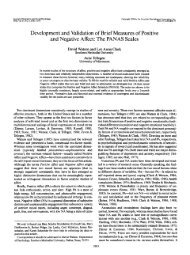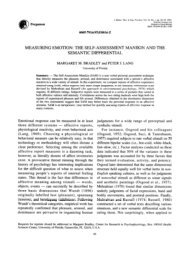Annual Report of Activities CNC 2008 - Center for Neuroscience and ...
Annual Report of Activities CNC 2008 - Center for Neuroscience and ...
Annual Report of Activities CNC 2008 - Center for Neuroscience and ...
Create successful ePaper yourself
Turn your PDF publications into a flip-book with our unique Google optimized e-Paper software.
Vectors <strong>and</strong> Gene Therapy | Head: Maria da Conceição Pedroso de LimaObjectivesThe Group <strong>of</strong> Vectors <strong>and</strong> Gene Therapy isdevoted to the design <strong>and</strong> development <strong>of</strong> carriers,including viral <strong>and</strong> non‐viral vectors, <strong>for</strong> nucleicacid <strong>and</strong> drug delivery aiming at their applicationin gene therapy <strong>and</strong> gene silencing approaches.Regarding the development <strong>of</strong> non‐viral vectors,the specific aims include the generation <strong>of</strong> novellipid‐based nanosystems <strong>for</strong> efficient intracellulardelivery <strong>of</strong> drugs <strong>and</strong> nucleic acids (plasmid DNA,antisense oligonucleotides or siRNAs) <strong>and</strong>evaluation <strong>of</strong> their potential in therapeuticapproaches <strong>for</strong> two major diseases: cancer <strong>and</strong>neurodegenerative disorders. For this purpose, ourresearch has been focused on the selection <strong>of</strong>appropriate lipids, lig<strong>and</strong>s <strong>and</strong> cell‐penetratingpeptides, <strong>and</strong> on the development <strong>of</strong> technology togenerate nanosystems with adequate features <strong>for</strong> invivo use, allowing targeting to specific cells ortissues <strong>and</strong> enhanced intracellular nucleic aciddelivery. In parallel, mechanistic studies on theinteraction <strong>of</strong> the developed systems with targetcells, including cell internalization <strong>and</strong> intracellulartrafficking, have also been addressed aiming attheir optimization <strong>for</strong> specific therapeuticapplications. Evaluation <strong>of</strong> the therapeutic activitymediated by the developed systems has beenper<strong>for</strong>med in several in vitro <strong>and</strong> in vivo models<strong>for</strong> cancer <strong>and</strong> neurodegenerative disorders, <strong>and</strong>also constitutes an important goal <strong>of</strong> this Group.Regarding viral vectors, the group aims atdeveloping <strong>and</strong> using viral vectors as atechnological plat<strong>for</strong>m to generate genetic models<strong>of</strong> neurodegenerative diseases, such as Machado‐Joseph disease, <strong>and</strong> to develop new moleculartherapeutic strategies involving gene transfer orsilencing <strong>of</strong> mutant genes by expression <strong>of</strong> shorthairpin RNAs.Main AchievementsRegarding the development <strong>of</strong> improved non‐viralgene delivery vectors, we demonstrated thecapacity <strong>of</strong> the S413‐PV cell‐penetrating peptide,either per se or in association with cationicliposomes, to very efficiently mediate theintracellular delivery <strong>of</strong> plasmid DNA.Regarding the evaluation <strong>of</strong> the developednanosystems in anticancer strategies, we haveshown that combination <strong>of</strong> antineoplastic agentswith suicide gene therapy mediated by albuminassociatedlipoplexes results in a remarkablesynergistic antitumor effect, highlighting thepotential <strong>of</strong> this approach <strong>for</strong> future applications inantitumoral therapy.We have also developed a novel lipid‐basednanosystem that has the potential to target themicroenvironment <strong>of</strong> human breast tumors at twodifferent levels: tumor cells <strong>and</strong> endothelial cells <strong>of</strong>tumor blood vessels. Such features led to adramatic improvement <strong>of</strong> cytotoxicity <strong>of</strong>encapsulated small molecular weight drug, ascompared to the non‐targeted <strong>for</strong>mulation. Thetargeting ability <strong>of</strong> the developed nanosystem wasconfirmed in tumor cells harvested from tumors <strong>of</strong>patients submitted to mastectomy.Concerning the potential <strong>of</strong> the developednanosystems in gene silencing approaches <strong>for</strong>neurodegenerative disorders, we achievedsignificant downregulation <strong>of</strong> gene expressionupon neuronal siRNA delivery mediated bytransferrin‐associated lipoplexes, both in vitro <strong>and</strong>in vivo. Moreover, promising results were obtainedregarding the application <strong>of</strong> these systems tomediate downregulation <strong>of</strong> specific pro‐apoptotictargets, which may prove useful in therapeuticapproaches to neuronal protection <strong>and</strong> repair.Using lentiviral vectors (LV) to transduce the ratbrain we overexpressed polyglutamine‐exp<strong>and</strong>edataxin‐3 in this way replicating Machado‐Josephdisease neuropathology. LVs also allowed the firstdemonstration <strong>of</strong> in vivo allele‐specific genesilencing. More recently we did not observetoxicity upon endogenous wild‐type ataxin‐3silencing <strong>and</strong> showed that LV‐mediated non‐allelespecificsilencing <strong>of</strong> ataxin‐3 is effective <strong>and</strong> welltolerated in vivo.38






